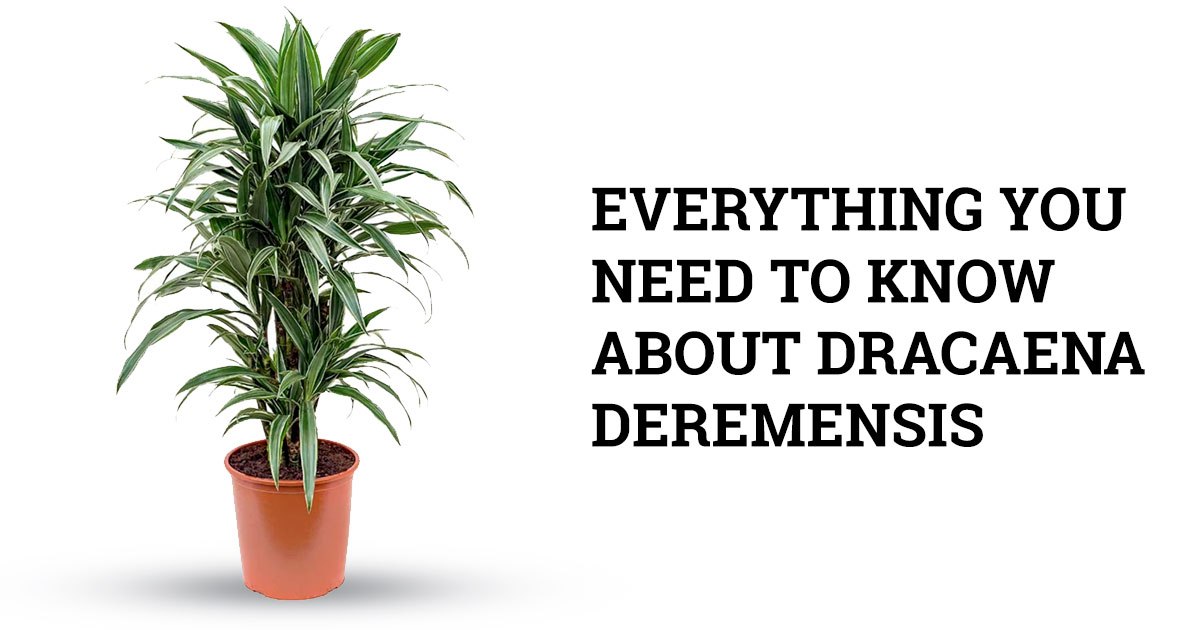When you know what to plant next to this or...
Dracaena Deremensis Care - Plant Guide
Dracaena Deremensis is one of the most popular and unpretentious plants. This stately beauty has high decorative properties. Dracaena Deremensis has tricolored exquisite foliage curling at its edges. An enticing variety for flower growers, as it is able to quickly adapt to the surrounding conditions and grow densely.
✔ We Released The Dracaena HandBook
CLICK HERE TO LEARN MORE >>
The name Dracaena Deremensis is of Greek origin. Translated, Dracaena means “Female Dragon”. Everyone who has ever seen this indoor plant knows that there are red strips exuding resin on its leaves. When the resin of dracaena stiffens, it resembles the blood of a dragon. Dracaena Deremensis is an evergreen plant.
It has very dark foliage. Dracaena's advantage is that it is unpretentious in care. However, its decorative properties are always at a high ebb. The plant is able to decorate not only the house, but also the office due to endurance and reliability. Another advantage of Dracaena Deremensis is that it purifies the air from harmful and toxic substances.
The birthplace of Dracaena Deremensis is Africa. It belongs to a rather large kind of dracaena. The plant has a thick tree-like trunk that can grow up to 3 meters high. Its dark green leaves are up to 50 long, up to 5 cm wide and are covered with white (yellow) longitudinal stripes. If kept indoors, Dracaena Deremensis blooms rarely. The inflorescences are red, with a nasty pungent aroma.
Description of Dracaena Deremensis
Dracaena Deremensis belongs to the Agave family. Her homeland is Africa, so in our climate it is exclusively a houseplant. Young dracaena is similar to a bundle of green leaves sticking out of the soil. When it grows up, it acquires the appearance of a miniature palm tree, since it has a bare trunk. The height of the plant can reach 1.5 m.
Its leaves are dark green, tinged with longitudinal white stripes. They are tough, so you should regularly wipe the dust with a damp cloth from the leaves.
In nature, round bright orange fruits appear on Dracaena Deremensis, but in room conditions this happens extremely rarely.
Varieties of Dracaena Deremensis
Warneckii — has white and grey longitudinal stripes on the green crown. This Dracaena Deremensis is up to 2 m high. It blooms with white flowers, with a pleasant aroma. The plant is unpretentious.
Janet Craig – is a Dracaena Deremensis with a sturdy trunk and dense lanceolate leaves, elongated, glossy growing on the basis of it. Young plants are up to 40 cm long, grow vertically, adult plants grow up to 1 m, bow downwards. This Dracaena Deremensis as a houseplant does not bloom. In nature, it forms inflorescences of spike-shaped form.
Janet Craig Compacta — is up to 2 meters tall. The leaves are glossy, collected in dark green bundles. When kept indoors this type of Dracaena Deremensis is unpretentious.
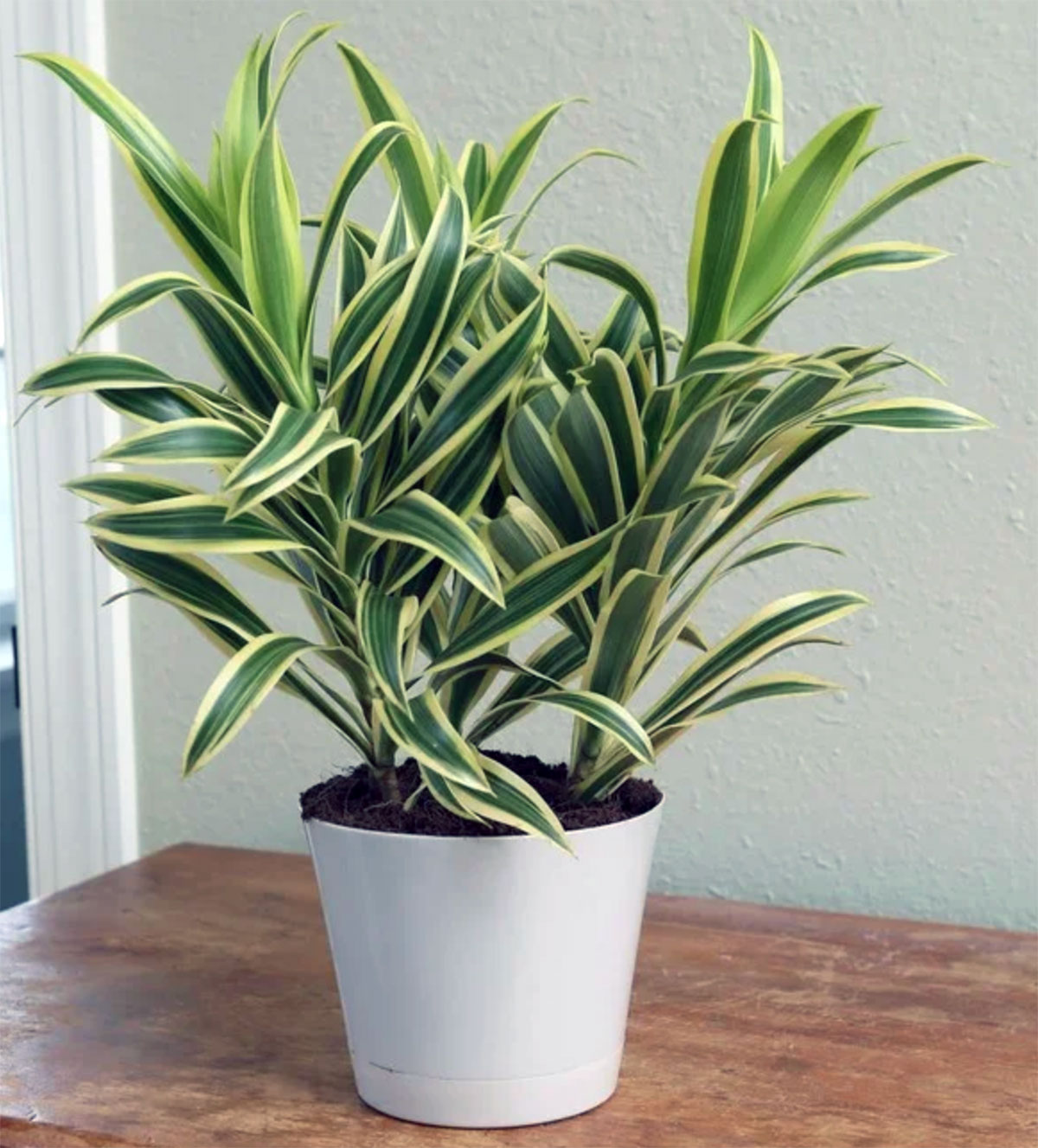
Dracaena Deremensis: Plant Care Guide
Dracaena Deremensis is often grown in gardens. With proper care, Dracaena Deremensis looks like a small and neat tree. The plant has a stunning decorativeness, it quickly grows and perfectly adapts to new conditions.
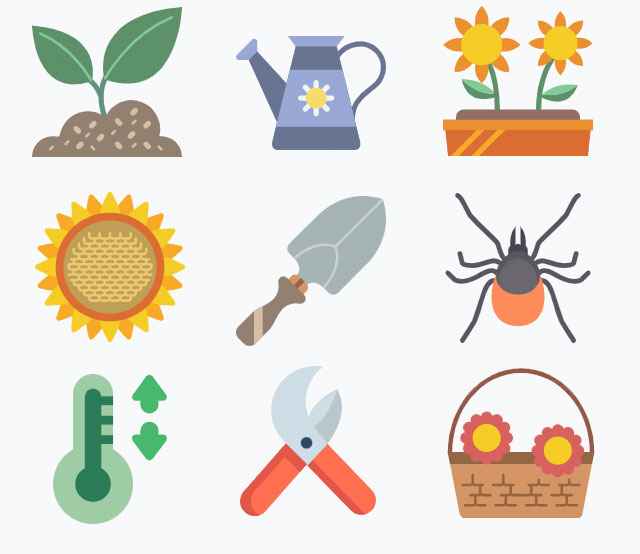
Lighting
Dracaena Deremensis is a light-loving plant, but it does not like direct sunlight, since burns appear on the leaves because of this. Scattered light, which can be created with a translucent curtain, is perfect for Dracaena Deremensis. In summer, it can stand on the balcony all the time, but in such a place that it does not get direct sun rays, rain and drafts.
In winter, it is recommended to extend the daylight with the help of a special lamp for plants, they are sold in horticultural stores.
Temperature
This heat-loving plant in nature grows in subtropical climates, it does not tolerate cold. In the room, where Dracaena Deremensis is located, in summer the temperature should be within +21°C +26°C. This temperature regime is ideal for Dracaena Deremensis and it contributes to rapid growth.
In winter, it is permissible that the temperature drops to +18°C. The plants growth will slow at this time.
Dracaena Deremensis does not tolerate a further decrease in temperature to +16°C and below, while +12°C is a critical mark, after which the plant dies very quickly.
For Dracaena Deremensis, a sharp temperature drop is not recommended too. If the room temperature is below +21°C, the plant's growth slows down. However, as soon as it gets warmer, the flower comes to life again.
Air humidity
Dracaena Deremensis tolerates soil drying well, but it is very sensitive to the level of humidity in the air. Give a warm shower to your Dracaena Deremensis once a week. To do this, a pot with a flower can be put in a bath or shower and watered with warm, but not hot water.
If a pot is too large and it is not possible to bring it to the bathroom, it is necessary to wipe the leaves from dust once a week with a damp cloth, and then spray water around the plant, creating an increased humidity level in the air.
Dracaena Deremensis especially needs such procedures during the summer heat and in winter, if during the heating period the room is too hot.
It is not recommended to put it next to heating appliances, it will suffer from over-dried air.
Ideally, you need to buy an air humidifier and place it next to the Dracaena Deremensis.
Watering
Dracaena prefers regular but moderate watering. In spring, summer and early warm autumn, Dracaena Deremensis should be watered little once every 2-3 days. You should not pour the plant to such an extent that the soil never dries out, this will lead to its death. In winter, water Dracaena Deremensis less often, after complete drying of the soil.
If after watering, water has gained into the pallet, it is necessary to drain the water.
For watering Dracaena Deremensis use warm filtered water. If there is no such water, take water from under the tap and settle it in the room for at least a day so that it warms up, and chlorine evaporates from it.
It is possible to grow Dracaena Deremensis using hydroponics method. The bottom line is that the roots of the plant grow not in the ground, but in water, and get nourished from there. To do this, add doses of the nutrient solution into the water.
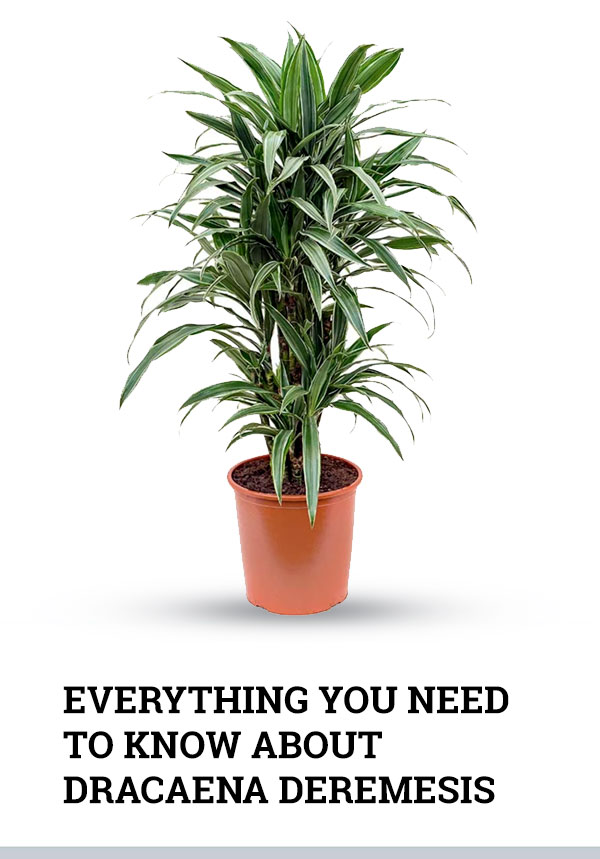
Soil
The best option is deciduous soil with an admixture of sand or slightly acidic with the addition of decomposed manure. Charcoal can be added to the soil, it will prevent roots rotting. At the bottom, drainage from expanded clay is mandatory.
The top layer of soil should be picked up periodically, so that oxygen flows well to the roots.
Each year, replace the upper 5-10 cm of soil with a new mixture. This is an excellent disease prevention.
Fertilizer
Dracaena Deremensis is unpretentious in nutrition, any complex fertilizer for indoor plants is perfect for it. Dilute the fertilizer in water in the proportions indicated on the package. You need to feed the plant in spring and summer once a week, when there is an active growth. From late autumn, stop fertilizing Dracaena Deremensis until spring, providing the plant with a period of rest.
If your Dracaena Deremensis grows and develops poorly, it is better to apply nitrogen formulations that contribute to the growth of foliage. Only after the plant starts to grow, go to complex fertilization. Use fertilizers only after abundant watering of the plant.
Repotting and propagation of Dracaena Deremensis
The root system of Dracaena Deremensis grows over time and can no longer be in a close pot. From time to time repotting is required. You can even replant the flower annually. The best time to repot Dracaena Deremensis is spring.
If the height of Dracaena is about 40 cm, the diameter of the pot should be at least 15-20 cm. You cannot procrastinate with a plant repotting, as it can get additional stress. Once you've determined that the pot needs to be replaced with a larger one in size, replant it within a week.
It is necessary to repot Dracaena Deremensis immediately after you bought it, as together with the plant you can bring home pests and even bacteria that provoke diseases.
It is better to use the soil for palm trees or prepare the soil mix yourself (take compost, peat, leaf soil in equal parts, add a little charcoal). Choose a pot 1-3 cm larger than the previous one, ceramics, clay are the recommended as a material of the pot.
When repotting Dracaena Deremensis, carefully inspect the roots, remove suspicious root processes (dry, rotten parts) with a sharp knife. Gently place the plant in a pot, up to half filled with a substrate, fill up to the top, but do not tamp the soil (Dracaena Deremensis likes a plump loose soil).
The final stage is light watering, do not pour the plant, as overhydration threatens to rot the roots. Greenhouses after repotting are not needed. Dracaena Deremensis quickly gets used, but only if it is provided with optimal conditions.
If the repotting is not yet required, for healthy growth of the plant, you can simply change the top layer of the soil to a fresher one.
The tips on repotting Dracaena Deremensis:
It is necessary to purchase for your Dracaena Deremensis a pot 2 cm larger in diameter than the previous one.
The bottom of the pot must have drainage holes and should be covered with drainage by 1.5 cm. If this stage is missed, then the plant will suffer from stagnation of water.
It is necessary to pull Dracaena Deremensis from the pot, lightly shake off the soil and place it in the center of the new pot.
Fill voids with a new soil mix.
After replanting, you need to observe a moderate watering regime for Dracaena Deremensis.
Propagation

Dracaena Deremensis is propagated by cuttings of the top. Gently cut off the top of the plant at an angle, it should be at least 15 cm long. The cut should be smooth, so that the stem does not rotate and strengthen. The cut petiole should be left for several hours to dry. The water should be at room temperature and pre-settled. To avoid strong clouding of water, activated carbon will help you.
The rooting of the plant is quite a long process, it will take about 2 months. For cuttings it is necessary to use a healthy plant, otherwise the cuttings will not take roots. As soon as they appear a flower should be planted in a pot with mineralized soil.
Care for the seedling should be more thorough than for an adult plant: the room temperature is not lower than 24°C and sufficient scattered lighting. At this stage, you can use the greenhouse method - enveloping the pot with translucent polyethylene.
Water Dracaena Deremensis seedlings as the top layer of the soil dries, and sprinkle its leaves with settled water several times a day.
If the top of Dracaena Deremensis is quite weak, use the method of propagation by stem cuttings. To do this, you need to take a healthy stem and cut it into long pieces along the line of scars. The cutting tool should be perfectly sharp and clean. Root cuttings in the sand and create greenhouse conditions for them with spraying.
Dracaena Deremensis can also be propagated with seeds, but this method is suitable only for varieties with green leaves, while variegated at the germination stage lose varietal properties. Seeds come up after 6 weeks, and it’s better to sow them in spring.
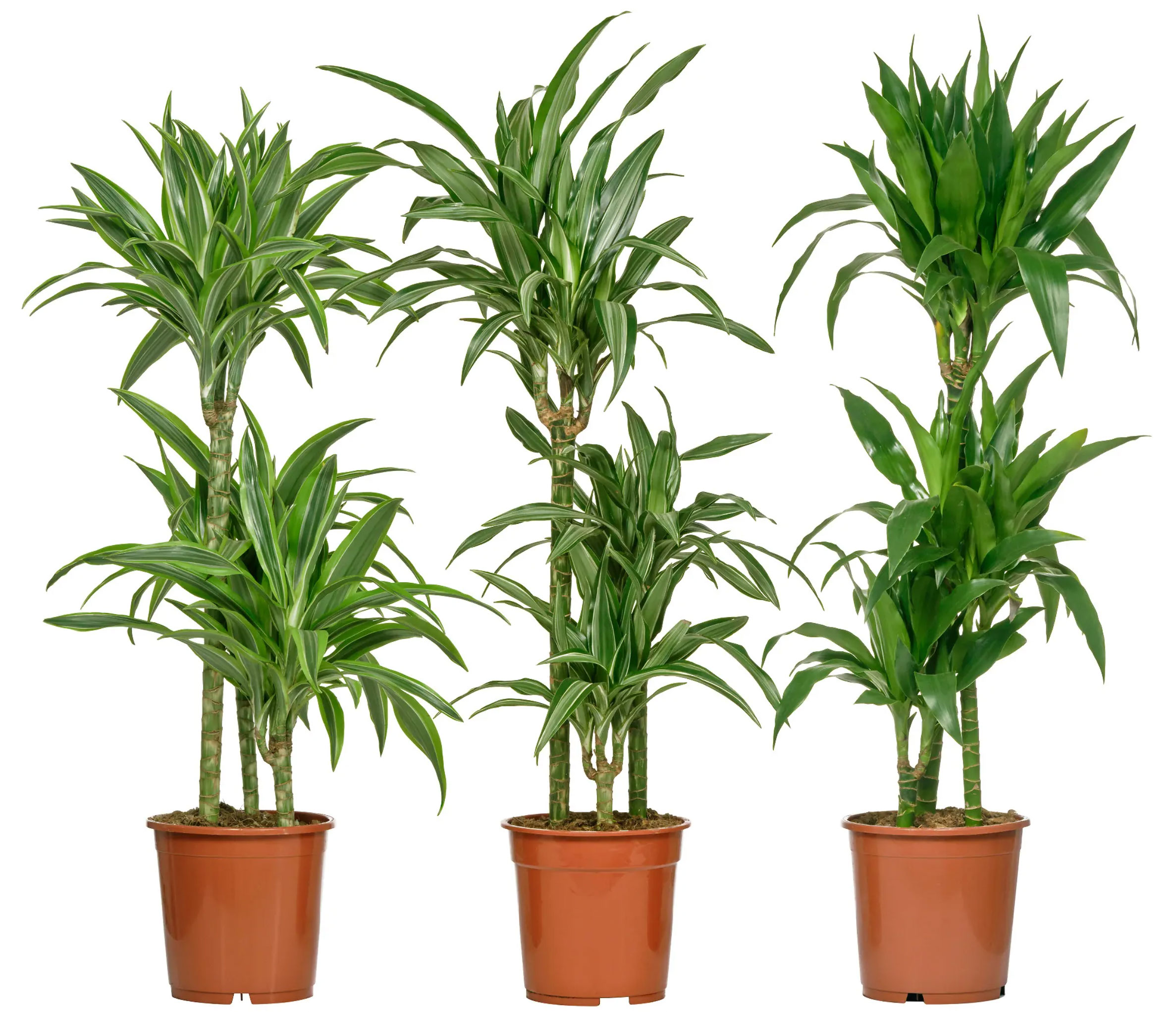
The simplest way of Dracaena Deremensis propagation is rooting in water. There will be no special difficulties, if you first study the features of the process:
Cut off a small apical cutting (no more than 20 cm long), it is recommended to make an oblique cut, this will get a larger number of roots.
Prepare a solution for rooting - in the settled water dissolve the necessary amount of any rootage substance (you can do without the drug, but then the roots will appear a few weeks later).
Put the cuttings in the solution, without deeply deepening it into the liquid, the cut should be only 1-2 cm in water.
Place the container with cuttings on a light windowsill. If direct sunlight falls on the plant, create a light penumbra using a curtain or a simple newspaper. Regularly check the amount of solution, add water, if necessary.
It is possible to send young Dracaena Deremensis to the substrate only after the roots reach 2-3 cm. During the first time, it is recommended not to overdo with watering - it is better to water the substrate often, but in very small portions. Come to usual watering only after your Dracaena Deremensis moves into growth.
Poisonous
Remember that Dracaena Deremensis is toxic to both cats and dogs. Do not allow your pets chew the leaves of the plant. It can cause weakness, vomiting and indigestion. At the first signs of poisoning, immediately bring your pet to a veterinarian. See more about pets and the effect toxins have here at the ASPCA.
Problems when growing and diseases of Dracaena Deremensis

Pests and diseases
The reasons for Dracaena Deremensis diseases are improper care, an inappropriate microclimate in the room or damage by pests. Most often, signs of diseases manifest themselves in the form of spots on its leaves.
The most common diseases of Dracaena Deremensis and their causes:
Brown spots on the leaves - insufficient watering.
Ends of leaves are brown - drafts.
Leaves twisted into a tube - sharp temperature changes.
Dry spots on the leaves - sunburn.
As for parasites, Tetranychidae or parlatoria can attack your plant. In this case, the plant should be treated with fungicide.
Powder-like white coating on leaves is powdery mildew. Its best prevention is regular wiping of the leaves from dust and showers or spraying the plant. You can get rid of it with antifungal drugs.
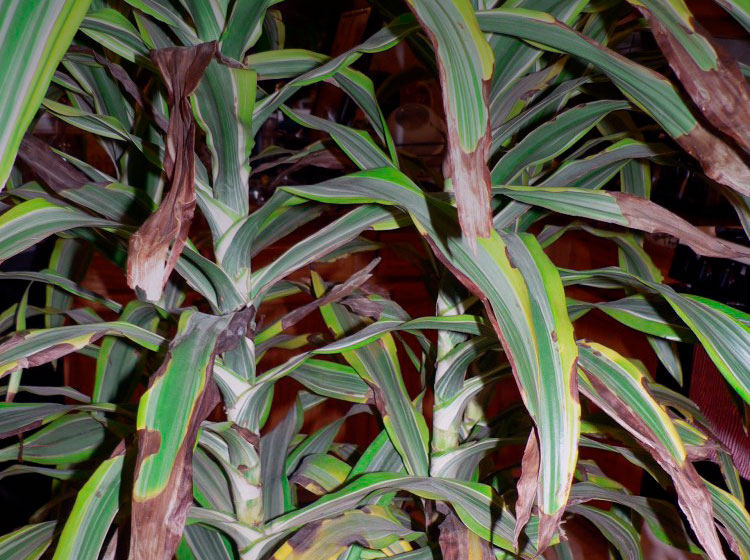
There is nothing complicated in the care for Dracaena Deremensis. Devote little time to your plant, and it will return the favor, decorating a house or an office. A well-groomed adult Dracaena Deremensis is like a real miniature palm tree. The plant will not go unnoticed by your guests or visitors to the office space. Many come to delight at this mini “palm tree”.
Pests of Dracaena Deremensis:
Scale insects
Spider mite
Mealybugs
Threadworm
Soot dew
Scale insects process the surface of the leaves and stems, sucking out cell sap. As a result, leaves become weak, lose color, dry and fall off. In order to get rid of pests, you should wipe the leaves with a soap sponge. After that, spray Dracaena Deremensis with an insecticide solution.
If the room is in high temperature, but low humidity, thrips may appear on Dracaena Deremensis. The pest deposits its colonies on the underside of the leaves. And there are light dots on the outside. To get rid of the disease, treatment with insecticides is required.
Aphid can attack Dracaena Deremensis as well. Usually, the pest affects the underside of the leaves and the tops of the scions. In this case, insecticide treatment also helps. If the effect is significant, treatment should be carried out several times.
Conclusion
When planning to decorate a room with one of dracaena types, I recommend you to choose Deremensis, because it does not require special attention, and even with a minimum of care Dracaena Deremensis will rapidly grow and develop.
This plant is also easy to propagate - difficulties will not occur even for beginners who are engaged in such a responsible process for the first time.
There is nothing complicated in the care for Dracaena Deremensis. Devote little time to your plant, and it will return the favor, decorating a house or an office. A well-groomed adult Dracaena Deremensis is like a real miniature palm tree. The plant will not go unnoticed by your guests or visitors to the office space. Many come to delight at this mini “palm tree”.
To the commonest of dracaena types belong:
- Snake Plant
- Marginata
- Sanderiana
- Reflexa
- Fragrans
- Lemon Lime
- Janet Craig
- Warneckii
- Massangeana
- Compacta
- Draco (Dragon Tree)
- Lisa Cane
About the Author
My name is Michael Bauer,
I have been growing and taking care of plants for 20 years. My dream has become a reality. I've had many difficulties along the way, but my love for our favorite plants has really helped me.
So join us!







